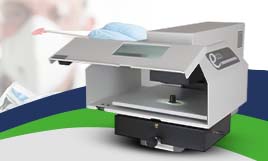The Basics You Need to Know About Kjeldahl Method
In 1883, the Kjeldahl method was specifically developed by Danish chemist, Johan G.C.T. Kjeldahl for determining the nitrogen contents in inorganic and organic substances (such as food, fertilizers, soil, grain wastewater, feed and other substances).
This analytical chemistry method is also applied for the estimation of protein content in food. Kjeldahl method helps in quantitative determination and measurement of nitrogen present in organic substances and also in inorganic compounds. This method plays a key role in the analysis of proteins.
There are several Kjeldahl method based solutions that are used in varied industries. Continue to read till the end to learn more about this method and the solutions that are based upon it.
Kjeldahl Method Applications
This popular method is used worldwide as it is subjected to several applications that demand for reproducibility and precision. However, users must keep a note that it does not provide true protein content measurement.
But it still has a number of advantages used in the field of chemical analysis. Some of the key applications of Kjeldahl nitrogen are as following -
Complete Kjeldahl Nitrogen
The complete nitrogen present in organic substances is known referred to as total kjeldahl nitrogen. It is primarily used in sewage treatment plants effluent as it promotes chemical analysis of the wastewater or soil water.
This is the most versatile, accurate and efficient way of obtaining the data required for this particular application. As for now, this specific treatment is utilized in several areas involving treatment plants for tracking plant operations.
Conversion Factors
The total kjeldahl nitrogen is based on the type of protein as well. In order to work with total kjeldahl nitrogen, it is essential to remember what fraction of the protein is made from nitrogenous amino acids.
The range of conversion is extremely low, as for food, it typically ranges from 6.38 for meat, maize, egg; 5.83 for rice and so on.
Sensitivity
In all its original version, the kjeldahl nitrogen method is not all sensible. The method is required to be made sensible by varied processes such as zone capillary electrophoresis, potentiometric titration and ion chromatography.
What are the Procedures involved in the Kjeldahl Method?
The working mechanism of this method is accomplished in three steps and they are -
Digestion
The organic sample taken or provided is preliminarily treated with a concentrated acid solution, typically sulfuric acid (H2SO4 ). The solution is boiled at a very high temperature and the acid solution works to digest the sample producing ammonium sulfate solution.
Distillation
This step involves a combination of boiling and condensation. By adding an excess of base to the formed solution, the ammonium sulfate solution is converted to NH3 gas.
Titration
And to finally be able to quantify the nitrogen that is present in the sample, the obtained product from the previous step is titrated for resulting into the final results.








